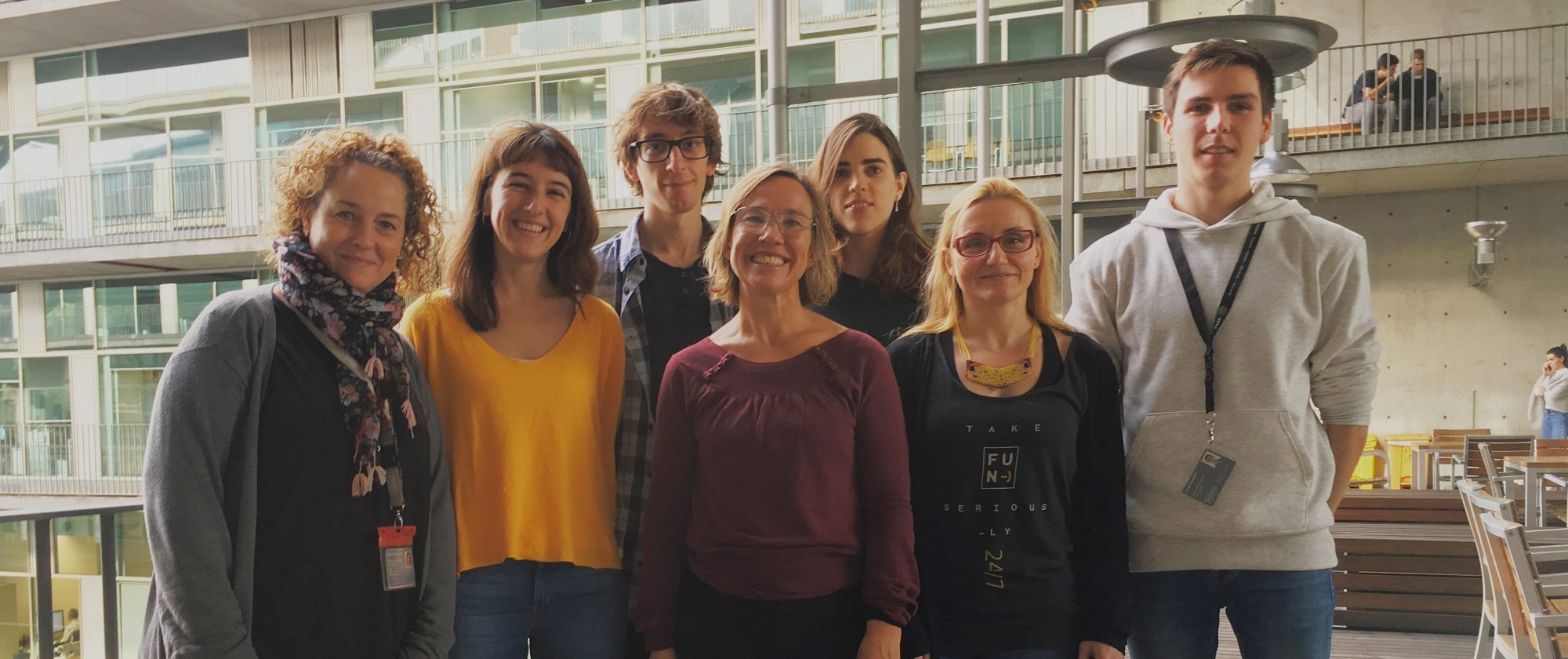In 2001, Berta Alsina arrived from the University of California, Los Angeles, to join the recently created developmental biology unit led by Fernando Giraldez at the Department of Experimental and Health Sciences, Pompeu Fabra University (DCEXS-UPF). Since 2005, she has been the principal investigator in the Morphogenesis and Signalling in Sensory Systems group.
The sensory neurones of the inner ear
The group studies organ formation. In particular, they look at the development of the inner ear, focusing on the sensory neurones that allow the transmission of auditory and balance stimuli to the brain. Ear progenitor cells differentiate and specialise into different cell types. Alsina’s team investigates, in vivo, what drives these to become functional neurones. To study this process, they work from the scale of genes, transcription factors and signalling pathways, up to cells, tissues and entire organs in intact embryos. The lab’s two most recent projects are aimed at understanding the communication between sensory neurones and blood vessels, and the relationship between cellular movements and neuronal differentiation.
Communication between sensory neurones and blood vessels
Until recently, we studied the brain as if it were only formed of neurones and glia. Now we know that it is a highly vascularised organ. Recent studies have shown that vessels are not only used to transport nutrients and oxygen; during development, and even in adult stages, but the formation of new neurones and stem cell maintenance in the brain are also conditioned by signals carried by these vessels, such as growth factors that are important for neurogenesis. Alsina’s lab is the first to look at this relationship during the development of the peripheral nervous system, in this case the ear.
Blood vessels are not only used to transport nutrients and oxygen; they are involved in the formation of new neurones and stem cell maintenance in the brain.
They study this in vivo, with the zebra fish as a model organism. “It has external fertilisation and we can obtain a large number of embryos. Also, it is transparent, and we can track its development in vivo, and its genetics are much simpler. It gives us a great range of tools”, explains Alsina. Transgenic zebra fish with fluorescently labelled neurones and vessels allow the researchers to follow, in real time, how vessels grow next to neurones. The researchers use mutants that cannot develop a vascular system, and they have observed that this affects the number of neuronal progenitors and their differentiation. “The vascular system has a more significant role than previously thought. It regulates the development of many organs by sending specific signals so that these organs reach the right size and number of cells, and can differentiate”, explains the principal investigator.
But questions remain to be answered. Which vascular signals regulate sensory neurogenesis? Could vessels also work as pathways to help neurones migrate? Could this correlate with the aggressiveness of more vascularised tumours? How does vascularisation affect other tissues and tissue regeneration?
In this video we can observe the blood vessels and neurones fluorescently labelled
during the development of the zebrafish, images from Berta Alsina’s Lab.
Cytonemes
The group also studies how progenitor cells communicate with each other in alternative ways to paracrine and endocrine signalling, where the signals are released but there is no direct contact between cells. By marking cells individually, and filming them in high 3D spatio-temporal resolution with confocal microscopy, they have been able to discover truly dynamic projections between cells, called signalling philopodia or cytonemes, that allow direct communication between neural progenitors.
These studies lead Alsina towards new projects. “We believe that understanding the relationship between vessels and neurones is important in neurovascular diseases and intracerebral haemorrhages. The idea is to continue with the basic research and do some translational projects as well”, concludes Alsina.







